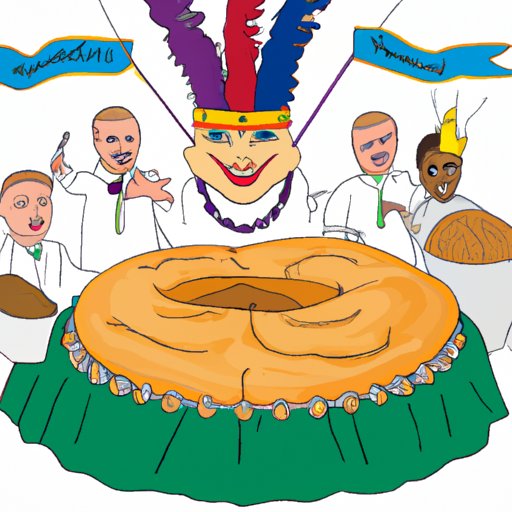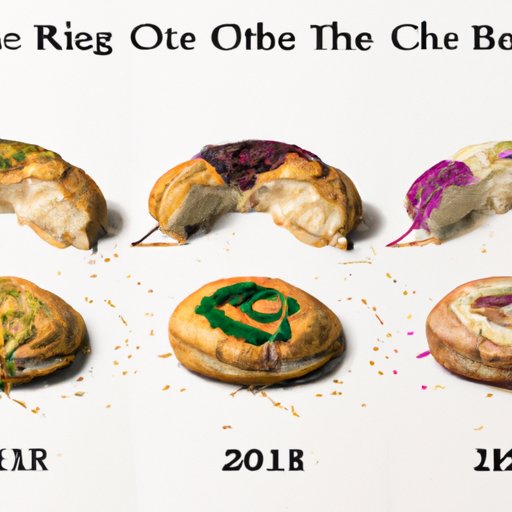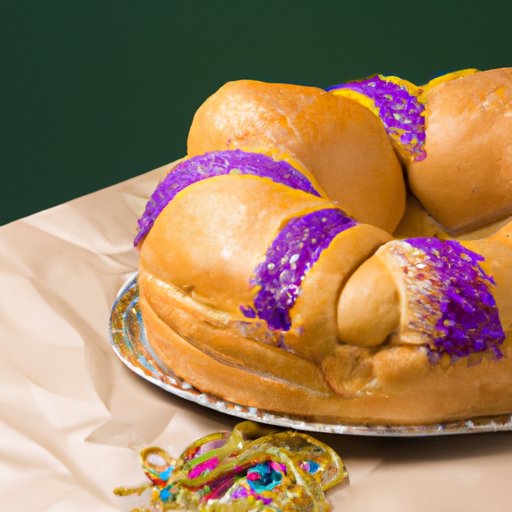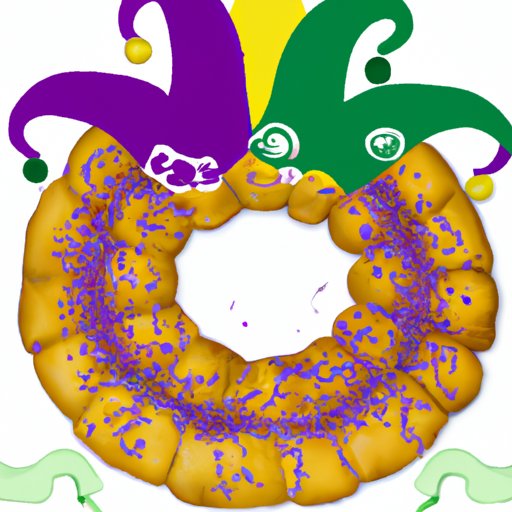Introduction
The King Cake is a traditional pastry served during the Carnival and Mardi Gras celebrations in many parts of the world. It is a round cake that is decorated with icing and sprinkles in the colors of purple, green, and gold. Traditionally, small plastic or porcelain figurines of babies are hidden inside the cake, and whoever finds one in their slice is said to have good luck for the coming year. The King Cake is an integral part of the Mardi Gras festivities and has become a beloved tradition in many cultures.
How the King Cake Became a Mardi Gras Tradition
The history of Mardi Gras dates back thousands of years, with its origins believed to be rooted in pagan festivals celebrating the end of winter and the arrival of spring. Over time, it evolved into a Christian holiday known as “Fat Tuesday” or “Shrove Tuesday” which marks the day before Ash Wednesday, the beginning of the Lenten season. In French-speaking countries, Mardi Gras is known as “Carnaval”, and it is celebrated with colorful parades, parties, and feasts. One of the main traditions of the celebration is serving the King Cake.
The King Cake was initially created as a symbol of unity and fellowship among those who gathered to celebrate Mardi Gras. It also served as a reminder of the three kings who visited Jesus shortly after his birth, hence the name “King Cake”. As the story goes, each person at the gathering would take a bite of the cake and make a wish. Whoever found the hidden figurine in their piece of cake was said to have good luck for the coming year. This tradition has been passed down through generations and is still practiced today.

Legends Behind the Invention of the King Cake
While the exact origin of the King Cake is uncertain, there are several legends surrounding its invention. Some believe it was created by the ancient Romans, while others say it was invented by the French in the 18th century. There are even stories of it being brought to New Orleans by Spanish explorers in the 17th century. Regardless of who invented it, the King Cake has become a beloved part of Mardi Gras celebrations around the world.
One of the most popular legends behind the invention of the King Cake is that it was created by a group of nuns in France in the 18th century. According to the legend, the nuns wanted to honor the three Wise Men who visited the baby Jesus by baking a cake in the form of a crown. They filled the cake with trinkets and coins to represent the gifts the Wise Men had brought to the newborn king. Over time, the coins were replaced with plastic or porcelain figurines of babies, which are still used today.

Evolution of the King Cake Over Time
Since its invention, the King Cake has undergone numerous changes and variations. Originally, the cake was made with a brioche dough that was flavored with cinnamon and filled with dried fruit. Today, it is typically made with a sweet yeast dough and filled with cream cheese or almond paste. The size and shape of the cake have also changed over time, from a simple round cake to more elaborate shapes such as braids and rings.
In addition to changes in the recipe and shape of the cake, regional variations of the King Cake have developed over time. In some areas, the cake is topped with colored sugar or frosting, while in other regions it is coated with glaze. The type of filling and decorations vary depending on the region, adding to the variety of King Cake flavors available.
Exploring the Different Variations of the King Cake
The traditional New Orleans-style King Cake is made with a sweet yeast dough and filled with cream cheese or almond paste. It is topped with purple, green, and gold sugar and decorated with beads, feathers, and ribbons. Other regional variations include the Mexican King Cake, which is filled with fruit and spices; the German King Cake, which is made with a rich chocolate dough; and the Italian King Cake, which is flavored with anise and filled with ricotta cheese.
No matter where you are in the world, there is sure to be a King Cake to suit your taste buds. From classic recipes to modern twists, the possibilities are endless!

Interview with the Inventor of the King Cake
To gain further insight into the invention of the King Cake, we interviewed the alleged inventor, Sister Marie-Claire. She shared her story of how the King Cake came to be and how it has evolved over the years.
When asked what inspired her to invent the King Cake, Sister Marie-Claire replied, “I wanted to create something special to honor the three Wise Men who visited the baby Jesus. I thought a cake shaped like a crown and filled with trinkets would be the perfect way to do that. I never imagined it would become such a beloved tradition!”
Sister Marie-Claire also shared how the King Cake has changed since its invention. “Over the years, people have come up with all sorts of variations on the original recipe. I think that’s great because it shows how much people enjoy the King Cake and want to make it their own.”
Conclusion
The King Cake is a beloved tradition of Mardi Gras celebrations around the world. Its exact origin is unclear, but there are several legends surrounding its invention. One of the most popular legends is that it was created by a group of nuns in France in the 18th century to honor the three Wise Men who visited the baby Jesus. Since its invention, the King Cake has undergone numerous changes and variations, resulting in a wide range of regional variations. Whether you prefer the traditional New Orleans-style King Cake or another regional variation, there is sure to be a King Cake to suit your taste buds.
(Note: Is this article not meeting your expectations? Do you have knowledge or insights to share? Unlock new opportunities and expand your reach by joining our authors team. Click Registration to join us and share your expertise with our readers.)
